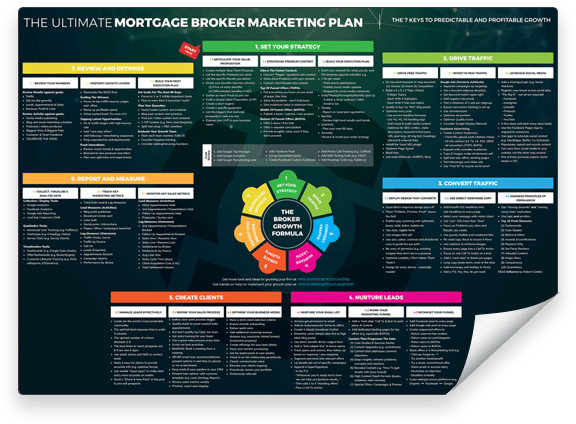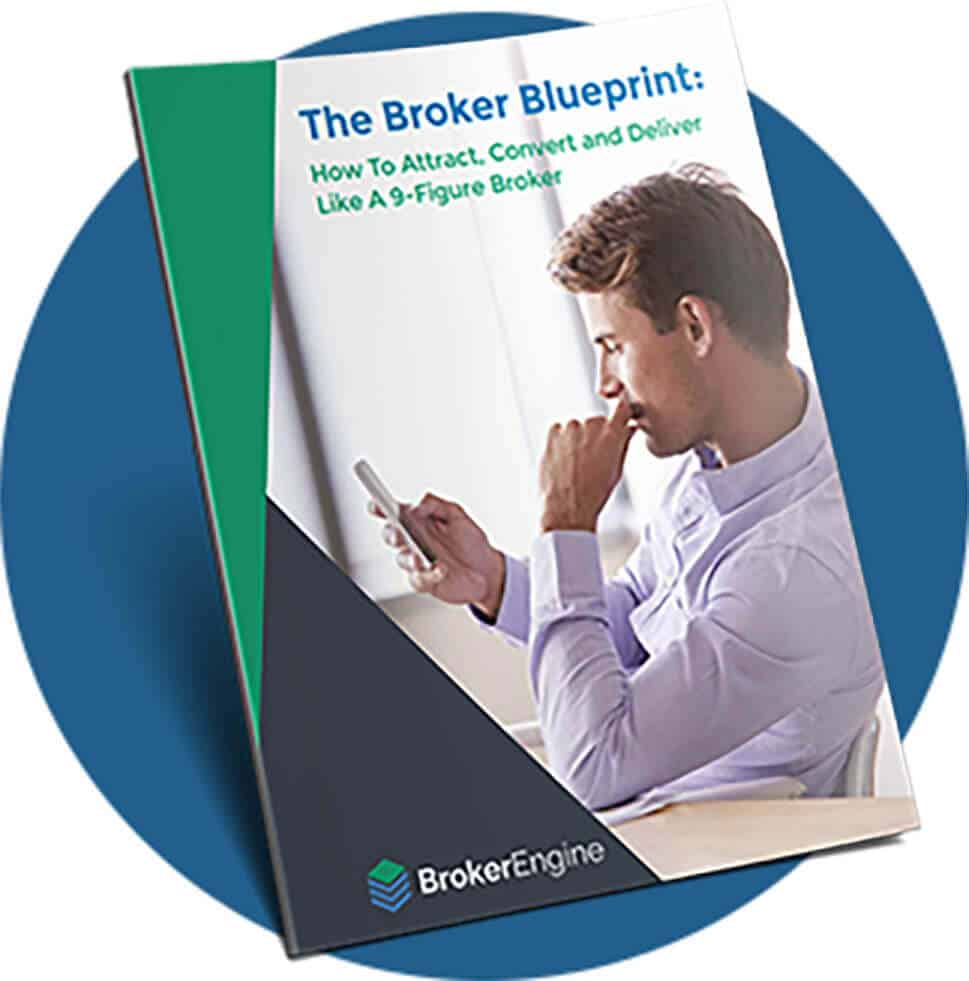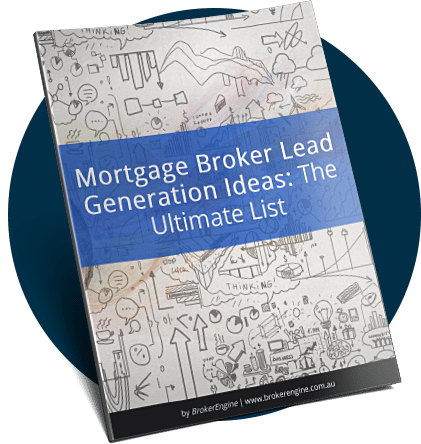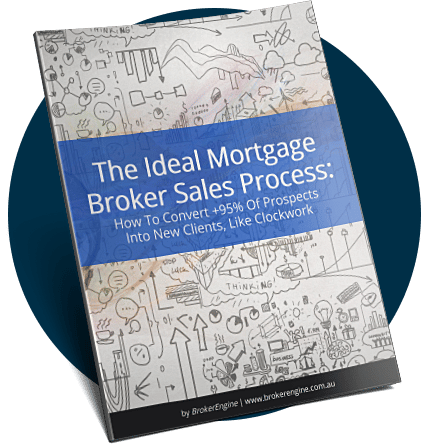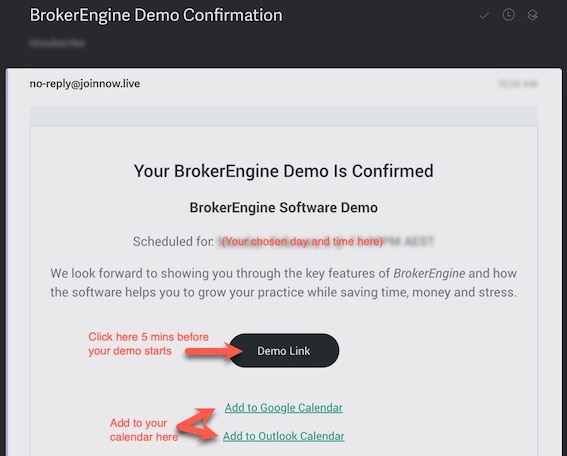
Any mortgage broker who is interested in lead generation naturally comes across search engine optimisation (SEO) as a potential strategy.
After all, what could be better than getting hoards of free website traffic from Google?
It sounds great — but many brokers try SEO (or engage an SEO agency) and fail.
And yet there are some brokers who generate plenty of traffic and new business every month through the free search engines.
In this article I’m going to unpack the exact SEO strategy that Building Loans Australia used to generate 397 new client enquiries in 12 months.
So let’s dive in…
What Is Search Engine Optimisation (SEO)?
I like this simple definition of SEO from the Moz.com website:
SEO is a marketing discipline focused on growing visibility in organic (non-paid) search engine results. SEO encompasses both the technical and creative elements required to improve rankings, drive traffic, and increase awareness in search engines.
In other words, the goal of SEO is to get your website prominently ranked in the “free” section of search engine results, just below the ads, as you see here:
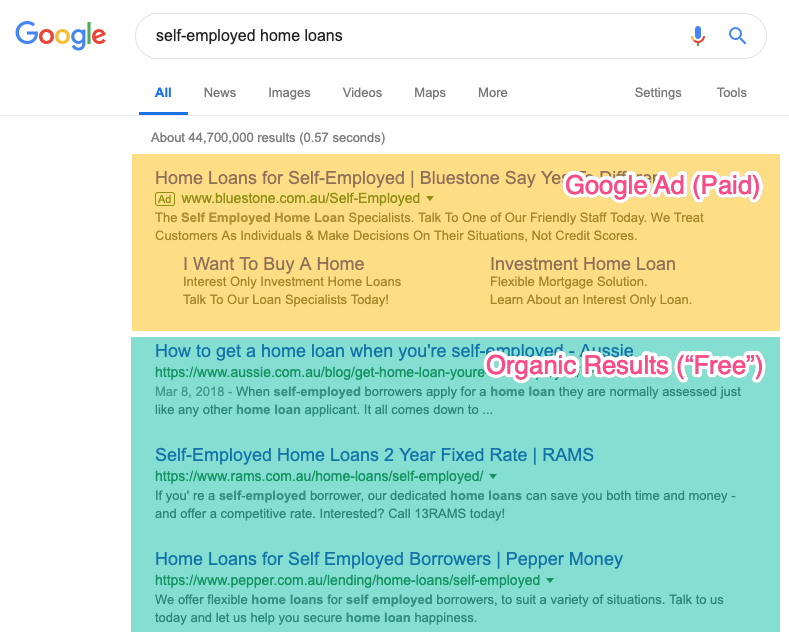
The only problem is that lots of other brokers are vying for the same search engine real estate.
So you need to apply a little strategy to make sure you outrank them.
397 New Client Enquiries In 12 Months From SEO
One of BrokerEngine founder Craig Vaughan’s mortgage broking brands is Building Loans Australia (BLA).
Over the last 12 months, BLA generated 397 New Client Enquiries via free search engine traffic.
- 287 enquiries via the “Free Consultation” page
- And a further 110 enquiries via the “Contact Us” page
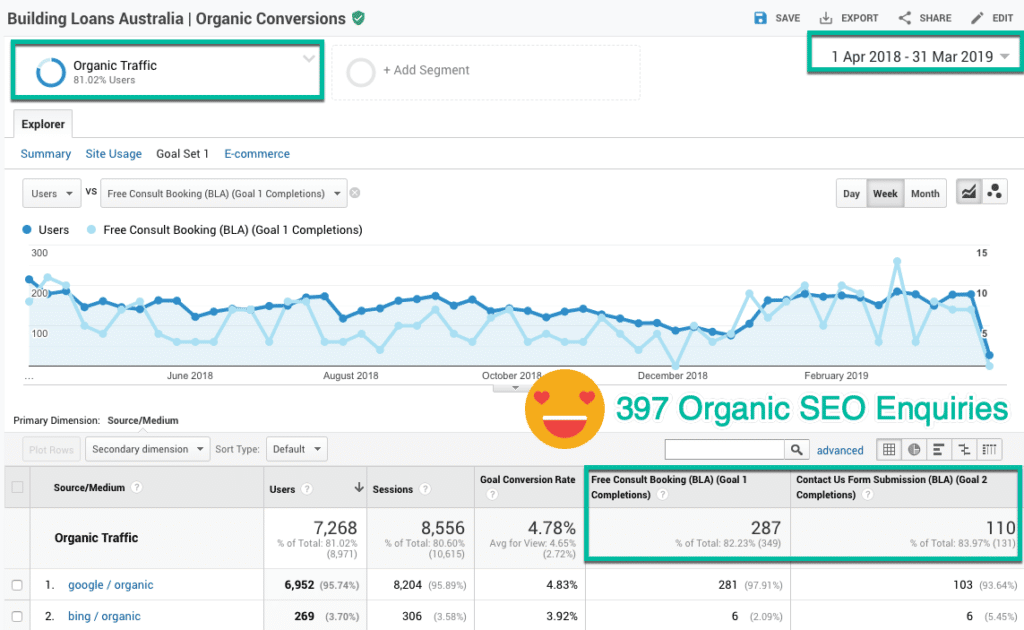
While not every enquiry is qualified, around 1 in 10 end up converting into a new client.
So that’s around 40 new clients from organic SEO in the last 12 months alone.
Now here’s the strategy that sits behind these results:
Step By Step SEO Strategy For Mortgage Brokers
Step 1: Keyword Research
The first step is to work out which keywords are worth targeting.
Ideally, you want to target keywords that meet the following three (3) criteria:
- Keywords that have a reasonable search volume
- Keywords that have a good conversion rate (i.e. high commercial intent)
- Keywords that are attainable (i.e. not too competitive)
In a perfect world, the ultimate keyword would be one that has lots of search volume, high commercial intent, and very little competition.
The only problem is: such a keyword does not exist. That’s because any keyword that has plenty of volume and high commercial intent will tend to be very competitive.
To show you what I mean, let’s take the search results for a popular term like “home loans”.
Below are the first 3 organic results that come up on my computer today. I’ve used a free plugin called the AHREFS Toolbar to help measure the competitiveness of this search term:
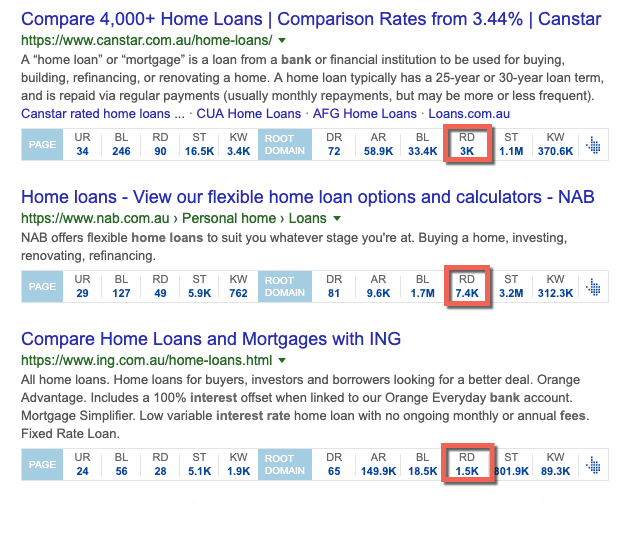
Without going into all the details, the websites that are ranking in the top 3 for the term “home loans” have between 1,500 and 7,400 domains (websites) linking to them. (That’s a lot).
Translation: don’t try to target ultra-competitive terms like this. Go for easier keywords where you have a chance of ranking in the short to medium term.
So What Type Of Keywords Should You Target Instead?
I recommend starting with search terms that have:
- A little bit of volume
- Reasonable commercial intent
- Low competition
Need an example? Here a few of the search terms that Building Loans Australia ranks for:
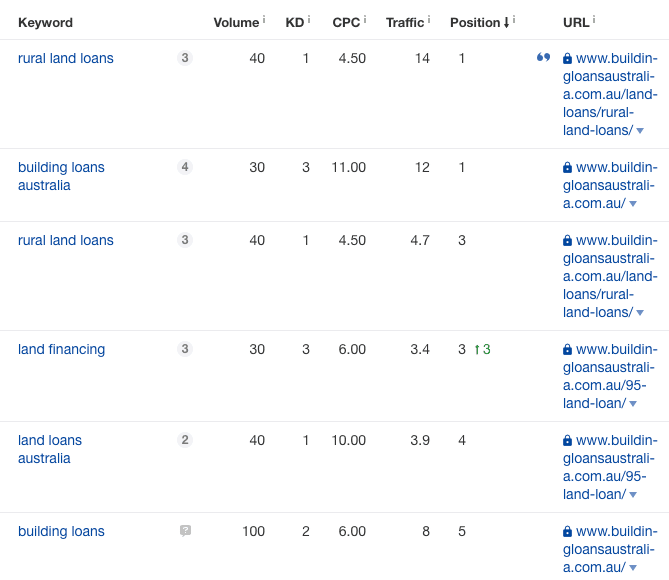
As you can see, a term such as “rural land loans” only has about 40 searches a month.
That’s not much, but it’s not very competitive, and it has reasonable commercial intent.
Keyword Research Tools
The best way to find viable keywords and assess how “gettable” they are is to use a keyword research tool. There are lots to choose from.
Here’s a great summary of keyword research tools, both free and paid.
Step 2: Structuring Your Website For SEO Effectiveness (“Siloing”)
In the case of Building Loans Australia, the topic of the website is (surprise, surprise) all about building and construction loans.
By choosing a focused niche, the website has a good foundation to rank for related terms.
One you’ve chosen your central theme, an effective SEO tactic is to structure the website carefully according to topics and sub-topics, like this:
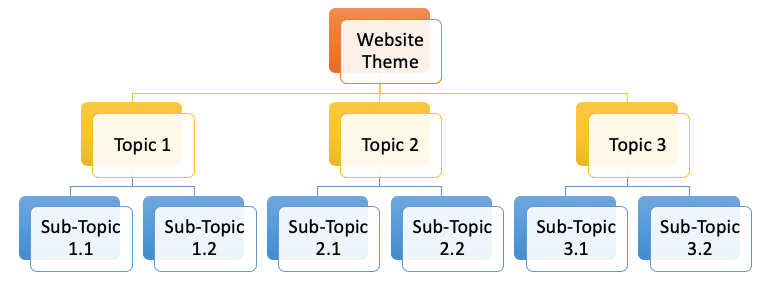
This way of organising content is called siloing. It’s a great way of organising your site content in a way that Google understands.
To make this more concrete, here’s how siloing has been applied on the BLA website:
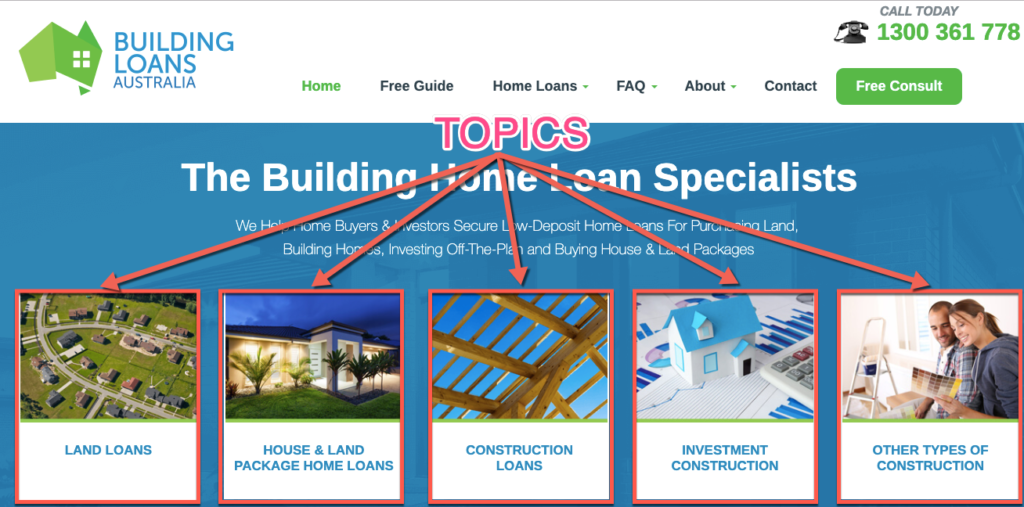
Within a major category such as “LAND LOANS”, you can see links to Sub-Topic Pages such as these:
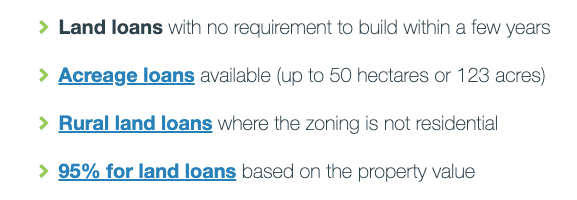
By organising the site like this, we’re creating a series of pages that can be optimised for very specific keywords.
Step 3: SEO On-Page Optimisation
Once a fundamentally sound site structure is in place, the next step is to optimise each page for one or more specific target keywords.
On-page optimisation is the art and science of peppering your page with the right keywords in the right places (without overdoing it).
While the below page isn’t great looking and could be improved in many ways, it does rank well for terms such as “rural land loans”.
Part of the reason for that is the appropriate use of keywords in the right places.
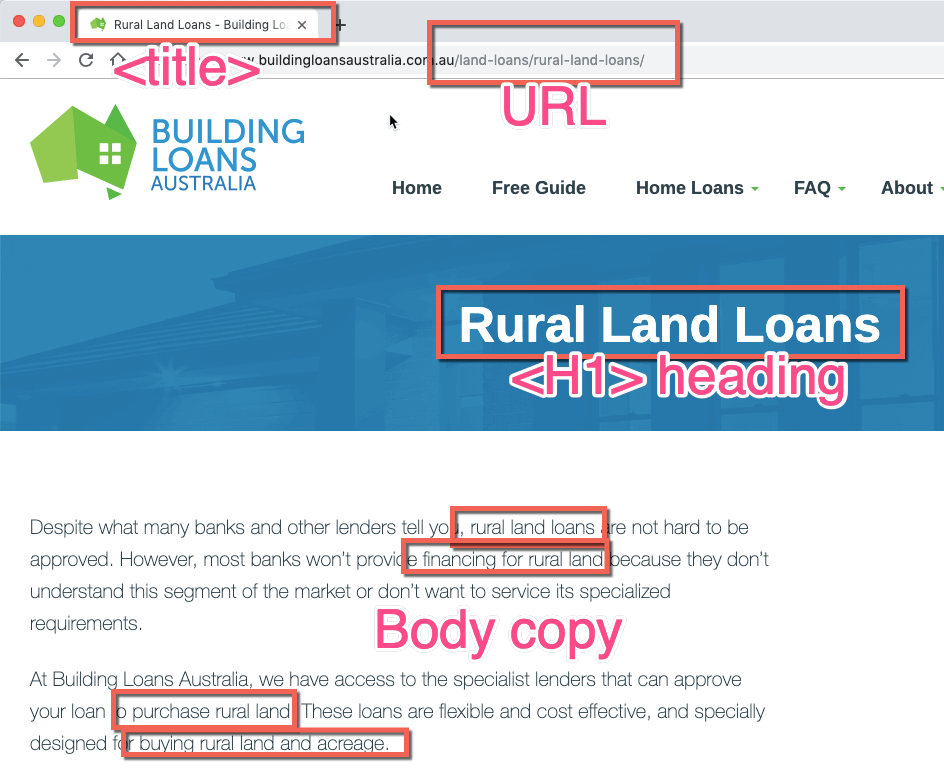
To get the best results, every page on your site should be optimised for different target keywords.
If you want to understand more about on-page SEO, Brian Dean’s on-page SEO guide is a great place to start.
Step 4: Off-Page Optimisation, aka Link Building
Once you’ve done your keyword research, structured your site correctly and optimised each of your pages from an on-page perspective, the next step is the most time consuming: link-building.
Search engines like Google treat links like “votes”. The more votes your website gets, the more likely it is you’ll rank well.
That’s the general idea. There are lots of nuances. But in general, if you build relevant links to your site, you will rank better in Google.
There are many, many ways to build links. AHREFS has published a guide on easy link-building strategies that is a great starting point.
Step 5: Track And Measure Your SEO Results
If you follow the advice in this case study (or embark on any search engine optimisation for your brokerage), then there’s one last step you need to take: tracking and measurement.
SEO agencies are notorious for telling their clients, “it will just take 3 months longer to start working… Just give us more time”.
That may or may not be the case.
Maybe your strategy needs a bit more time…. Or maybe it’s doomed to fail.
By tracking your SEO your activity and results using the below structure, you’ll be able to quickly tell the difference.
SEO Lag Measures (Outcome-based Metrics)
Lag measures are the outcomes of your SEO campaigns. Key lag measures to track on a regular basis include:
- Total organic visits
- Total organic conversions
- Organic traffic by keyword
- Organic rankings by keyword
- Google My Business and Google Maps rankings
- Special search engine rankings (e.g. images, knowledge graph, position zero)
- Phone calls generated via organic search (using a call tracking service such as CallRail)
While it’s critical to understand the results you’re getting from SEO, it’s also useful to track the activity that you (or your SEO company) is putting into your strategy.
This is because results will typically follow activity.
So if you’re not doing the right activities, it’s unlikely you’ll see the results.
SEO Lead Measures (Activity-based Metrics)
Useful activity measures include:
- Number of pages published
- Number of pages optimised on-page
- Number and quality of links built
- Number of citations built (i.e. references to your website published in directories etc.)
When it comes to activities, a little bit often is the way to go. It’s a marathon, not a sprint.
Conclusion and Next Steps
So that’s how Building Loans Australia generated 397 new client enquiries via organic SEO in the last 12 months.
With more focus, I suspect there’s potential to increase that number to 800 annually.
SEO is a strategy that takes a while to kick in. But once it gets rolling, it can add a significant volume of leads (without paying for clicks).
I hope you’ll put these techniques into action and let us know how you get on.


